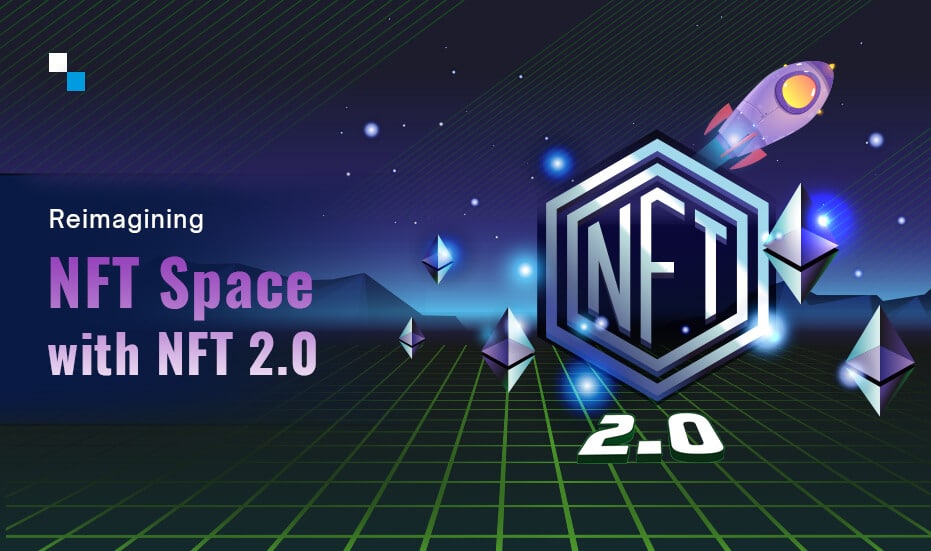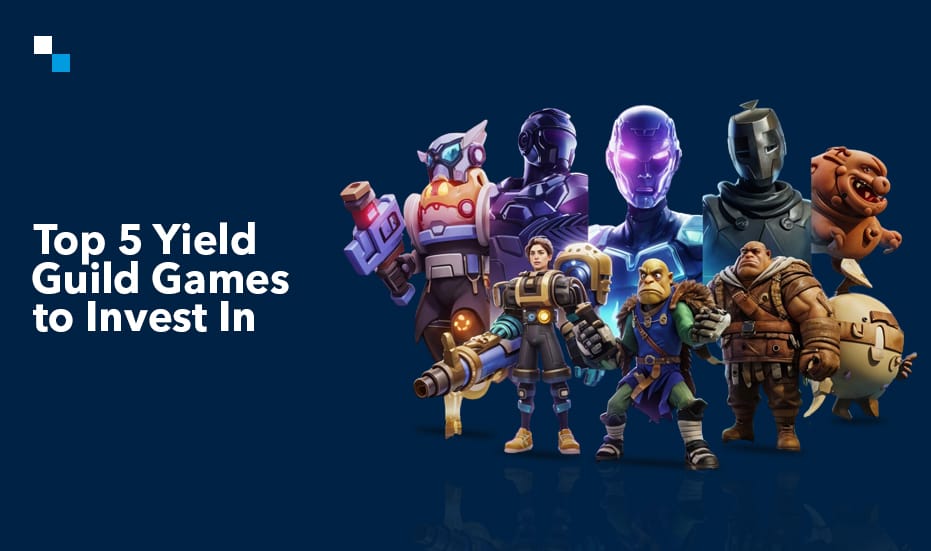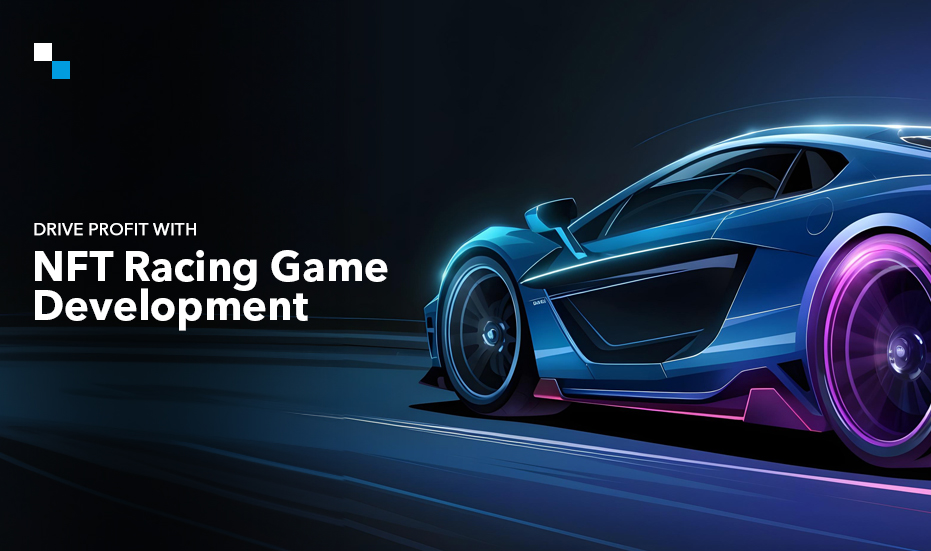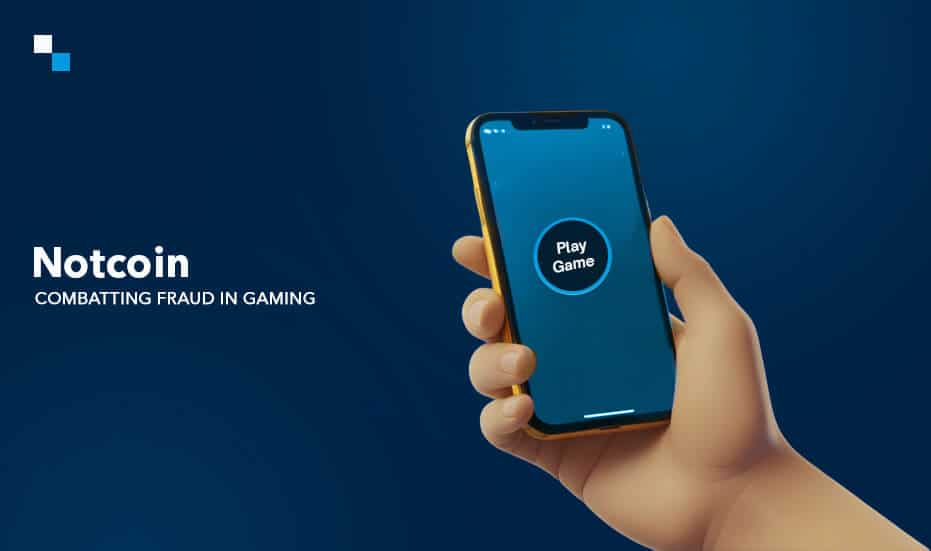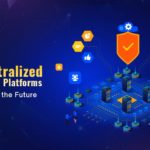NFT 1.0 was a major technological breakthrough that has had a significant impact on the world. NFT 1.0 was the first generation of non-fungible tokens (NFTs), and it laid the foundation for the NFT development market that we see today. FT 1.0 was a groundbreaking technology that paved the way for the NFT market that we see today.
NFT 1.0 NFTs were static, meaning that their metadata could not be changed once they were created. However, they were still able to provide a number of benefits, including:
- Proof of ownership
- Scarcity
- Transferability
- Interoperability
However, NFT 1.0 has a few limitations that NFT 2.0 is capable of overcoming.
In this blog, we’ll learn about NFT 2.0 in detail while understanding the popular NFT 2.0 token standards that have gained their popularity across the NFT token development space.
What is NFT 2.0?
NFT 2.0 is the newer generation of NFTs. It is characterized by its dynamic nature, meaning that its metadata can be changed over time. This allows for more flexibility and creativity with NFTs. NFT 2.0 can also be used to represent ownership of real-world assets, such as property and cars.
Unraveling the Journey from NFT 1.0 to NFT 2.0
NFT 1.0 and NFT 2.0 are two different generations of non-fungible tokens (NFTs). NFT 1.0 is the original version of NFTs, and it is characterized by its static nature. NFT 2.0 is the newer version of NFTs, and it is characterized by its dynamic nature.
NFT 1.0 was the first generation of non-fungible tokens (NFTs). It was essentially a digital collectible that could be bought and sold on NFT marketplaces. NFT 1.0 NFTs were static, meaning that their metadata could not be changed once they were created.
By being dynamic, multi-purpose, and interoperable, NFT 2.0 NFTs can be used for a variety of applications.
The journey from NFT 1.0 to NFT 2.0 has been driven by a number of factors, including:
- The increasing popularity of NFTs: The success of NFT 1.0 NFTs has led to increased interest in NFTs in general. This has created a demand for more advanced NFTs that offer more functionality.
- The development of new blockchain technologies: The development of new blockchain technologies, such as Layer-2 solutions and sharding, has made it possible to create NFTs that are more scalable, secure, and interoperable.
- The need for more versatile NFTs: The original use case for NFTs was as digital collectibles. However, there is now a growing demand for NFTs that can be used for a variety of other purposes, such as in gaming, finance, and real estate.
NFT 1.0 VS NFT 2.0
Here are some of the key differences between NFT 1.0 and NFT 2.0 that make both of them stand out in the NFT development space:
- Static vs. dynamic
NFT 1.0 NFTs are static, which means that their metadata cannot be changed once they are created. NFT 2.0 NFTs are dynamic, which means that their metadata can be changed over time. This allows for more flexibility and creativity with NFTs. - Single-purpose vs. multi-purpose
NFT 1.0 NFTs are typically single-purpose, meaning that they can only be used for one thing. For example, an NFT of a digital artwork can only be used to represent ownership of the artwork. NFT 2.0 NFTs can be multi-purpose, meaning that they can be used for multiple things. For example, an NFT of a digital artwork could also be used to provide access to exclusive content or events. - Closed vs. open
NFT 1.0 NFTs are typically closed, which means that they are not easily accessible to everyone. This is because they are often created on private blockchains. NFT 2.0 NFTs are typically open, which means that they are easily accessible to everyone. This is because they are often created on public blockchains.
NFT 2.0 is still a new technology, but it has the potential to revolutionize the way we interact with digital assets. By being dynamic, multi-purpose, and open, NFT 2.0 NFTs can be used for a variety of applications, such as gaming, art, music, and finance.
NFT 2.0 Types
There are a number of different types of NFT 2.0, each with its own unique features and benefits throughout the NFT token development ecosystem. Some of the most common types of NFT 2.0 include:
- Dynamic NFTs
Dynamic NFTs are NFTs whose metadata can be changed over time. This allows for more flexibility and creativity with NFTs, as they can be used to represent a variety of different things. For example, a dynamic NFT could be used to represent a digital artwork that changes its appearance over time, or it could be used to represent a ticket to an event that grants access to exclusive content. - Multi-purpose NFTs
Multi-purpose NFTs can be used for a variety of different purposes, such as gaming, art, and finance. This makes them more versatile than traditional NFTs, which are typically used for a single purpose. For example, a multi-purpose NFT could be used as a character in a game, it could be used as a digital artwork, or it could be used to represent a financial asset. - Interoperable NFTs
Interoperable NFTs can be used on multiple blockchains. This makes them more accessible to a wider range of users and can open up new possibilities for their use. For example, an interoperable NFT could be used in a game that is built on one blockchain, but it could also be used to represent ownership of a digital artwork that is stored on another blockchain. - Utility NFTs
Utility NFTs provide additional functionality beyond simply representing ownership of an asset. For example, a utility NFT could be used to provide access to exclusive content or events, or it could be used to automate transactions. - Smart contract NFTs
Smart contract NFTs are NFTs that are stored on a blockchain and that are governed by smart contracts. This means that the NFT can be programmed to perform certain actions, such as transferring ownership or redeeming rewards.

Popular Use Cases of NFT 2.0
Here are some of the potential use cases of NFT 2.0:
Gaming
NFT 2.0 can be used to create in-game items that are unique and can be traded with other players. This results in a more immersive and robust gaming experience.
For example, an NFT 2.0 could be used to represent a character in a game, and the character’s stats and abilities could be stored on the NFT. This would make it possible for players to trade characters with each other, and it would also make it possible for players to upgrade their characters by purchasing new NFTs.
Art
NFT 2.0 can be used to create digital artworks that are provably unique and can be resold on secondary markets. This could help to legitimize the art market and make it easier for artists to sell their work.
For example, an NFT 2.0 could be used to represent a digital painting, and the painting’s metadata could be stored on the NFT. This would make it possible for collectors to verify the authenticity of the painting, and it would also make it possible for collectors to resell the painting on secondary markets.
Music
NFT 2.0 can be used to create music tracks that are unique and can be sold directly to fans. This could help to give artists more control over their music and could lead to better financial returns.
For example, an NFT 2.0 could be used to represent a music track, and the track’s metadata could be stored on the NFT. This would make it possible for fans to purchase the track directly from the artist, and it would also make it possible for artists to track how many times their track has been played.
Finance
NFT 2.0 can be used to create financial assets that are provably unique and can be traded on secondary markets. This could help to make the financial market more transparent and efficient.
For example, an NFT 2.0 could be used to represent a share of a company, and the share’s ownership and transfer could be recorded on the NFT. This would make it possible for investors to verify the ownership of their shares, and it would also make it possible for investors to trade their shares on secondary markets.
Real estate
NFT 2.0 can be used to create digital representations of real estate that can be bought, sold, and rented on a blockchain. This could make it easier to buy and sell real estate and could help to reduce fraud.
For example, an NFT 2.0 could be used to represent a piece of property, and the property’s ownership and transfer could be recorded on the NFT. This would make it possible for buyers and sellers to verify the ownership of the property, and it would also make it possible for buyers and sellers to complete transactions with no third party involvement.
NFT 2.0 Token Standards
There are a number of different NFT token standards, each with its own unique features and benefits. Some of the most common NFT 2.0 token standards include:
1. ERC-1155
ERC-1155 is an upgraded version of the ERC-721 standard that allows for the creation of fungible and non-fungible tokens on the Ethereum blockchain. ERC-1155 NFT standards can be used to represent a variety of different assets, such as digital artworks, in-game items, and financial securities.
Major Highlights:
- Multi-token support
- Batch transfers
- Royalties
- Enhanced security
2. ERC-1659
ERC-1659 is a new NFT standard for NFTs that was proposed in 2023. It aims to address some of the limitations of existing NFT standards, such as high gas fees and scalability issues. ERC-1659 tokens are designed to be more efficient and cost-effective than previous generations of NFTs.
Major Highlights:
- Reduced gas costs for users
- Increased security
- Improved scalability
3. ERC-1791
ERC-1791 is a standard for NFTs that was proposed in 2022. It aims to improve the security of NFTs by introducing a number of new features, such as provenance tracking and support for multiple signatures. ERC-1791 tokens are designed to be more secure than previous NFT token standards.
Major Highlights:
- Metadata support
- Royalties
- Transferability
- Security
4. ERC-1967
ERC-1967 is a standard for composable NFTs that was proposed in 2023. It aims to make it easier to combine different NFTs into new, more complex assets. ERC-1967 tokens are designed to be more versatile and flexible than previous generations of NFTs.
Major Highlights:
- Immutable
- Track the ownership history of tokens
- Has a unique identifier
5. ERC-2025
ERC-2025 is a standard for multi-NFT tokens that was proposed in 2023. It aims to make it easier to create NFTs that represent multiple assets. ERC-2025 tokens are designed to be more efficient and cost-effective than previous generations of NFTs.
Major Highlights:
- Staking
- Governance
- Fractional ownership
- Cross-chain compatibility
6. ERC-6956
It is one of the NFT token standards designed to create asset-bound NFTs, which are NFTs that are linked to a physical asset. This could be used to create NFTs that represent ownership of real estate, cars, or other physical objects.
Major Highlights:
- Royalties
- Burning
- Batch minting
- Metadata
7. ERC-5773
This standard is designed to create context-dependent multi-asset tokens, which are NFTs that can represent multiple assets at the same time. This could be used to create NFTs that represent a collection of digital artworks or a portfolio of financial assets.
Major Highlights:
- Multiple owners
- Fractional ownership
- Batch minting
- Royalties
Embed the Latest NFT Token Standard in your NFT Project
Schedule Free Demo8. ERC-6059
This NFT token standard is designed to create parent-governed nestable NFTs, which are NFTs that can be nested within other NFTs. This could be used to create NFTs that represent a hierarchy of assets, such as a company’s organizational structure or a family tree.
Major Highlights:
- Batch minting
- Burning
- Stores more metadata
9. ERC-6220
This standard is designed to create composable NFTs, which are NFTs that can be combined with other NFTs to create new assets. This could be used to create NFTs that represent custom characters in a game or NFTs that represent financial derivatives.
Major Highlights:
- Transferrable licenses
- Batch minting
- Royalties
10. ERC-6381
This standard is designed to create Unicode emojis as NFTs. This could be used to create NFTs that represent custom emojis or NFTs that represent exclusive access to a set of emojis.
Major Highlights:
- Conditional minting
- Batch minting
- Burnable
11. ERC-6454
This NFT standard is designed to create minimal transferable NFT detection interfaces. This could be used to create NFTs that are easier to detect and track on the blockchain.
Major Highlights:
- Multi-owner
- Transferrable licenses
- Configurable royalties
Overall, NFT 2.0 is a promising new technology that has the potential to revolutionize the way we interact with digital assets. It is still in its early stages of development, but it is already making waves in the world of NFTs. It will be interesting to see how NFT 2.0 evolves in the coming years.
Planning to leverage the power of NFT 2.0 in your business? Antier can be your ideal digital partner to skyrocket your NFT development journey and get an immersive experience as never before. Book a free consultation today.
